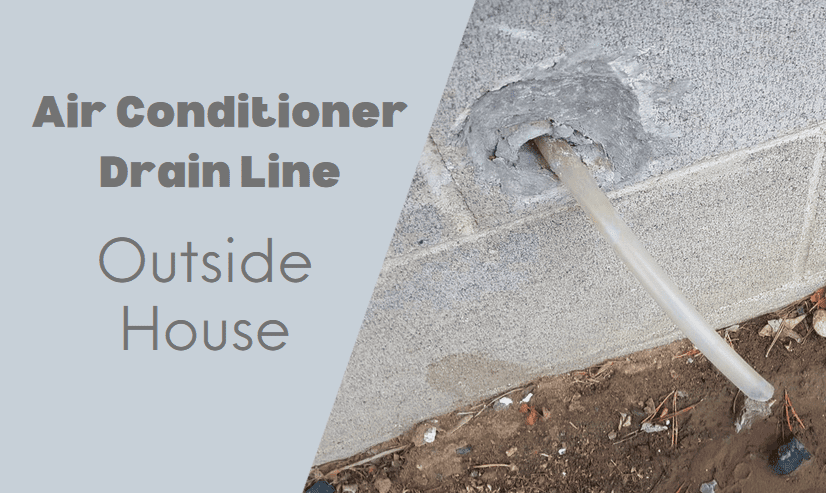Many understand that an air conditioner cools air, but a lesser-known fact is that it also extracts humidity from indoor spaces. This humidity turns into condensate water, often amounting to several gallons, which then flows down the condensate drain pipe.
However, you may notice that the air conditioner drain line outside the house produces so much water. Should you worry about it? Find out below.
How Much Should Water Drain from Air Conditioner?
The AC system in your house or building comprises of outside unit (the compressor) and an inside unit (the air handler). During the cooling mode, Freon gas fills the copper coils within the air handler with freezing temperature, then it condensates, as explained by the basic science principle, if you still remember.

The water begins to be condensed by the coils in the air handler because the coils have a cold temperature compared to the building temperature. After this process occurs, the condensation drip via the coils, strikes the drain pan and then flows through the AC water drain pipe extension to the outside of the building to be drained.
Read also: Why is My Portable AC Producing so Much Water?
How much water should drain from an air conditioner, and when does it become a concern? It’s typical for an air conditioner to drain between 5 to 20 gallons of water daily, especially during peak summer or on high-humidity days.
This water, known as condensate water, is a normal byproduct of the AC’s dehumidifying process.
A clogged AC drain line can lead to mold and mildew growth in your central air conditioning system, and can also cause water damage and poor indoor air quality.
To prevent this, you should regularly flush the drain line by using a wet-dry vacuum or by having a professional perform a line cleaning.
Read also: Steps to Take When Your AC Drain Line Keeps Clogging
Problems occur when the unit drains water inside the building rather than outside. This indicates a malfunction in the air conditioning system. To understand it better, here’s how the AC unit drains water to the outside of the house:
- The AC draws humid and warm air from the inside of the building and directs it to the evaporator coils.
- The air conditioner’s refrigerant absorbs the hot air and transfers it from the inside unit to the outside unit.
- When the air hits the coils, it loses its moisture, which is then collected in a drain pan situated right below the coils. This water, now turned into condensate, travels through the condensate drain pipe, typically a PVC pipe, to be expelled outside.
- You might notice water dripping from this pipe, which is a standard aspect of the AC’s operation.
If you observe water pooling around the AC condensate drain, don’t be alarmed immediately, as this is typical. However, if water pools inside the building, it could indicate a problem with the air conditioning system. Some components may need to be repaired or replaced.
Here are some of the possible problems if AC water starts draining inside the building:
- A frozen coil
- A faulty or rusted drain pan
- A congested condensate drain line
- A leakage in the refrigerant
- A defective condensate pump
If you notice water starts leaking from the AC unit inside the building, it is recommended to switch off the whole system and get in touch with a professional technician. The smallest amount of water can turn into a major problem if left untreated, leading to costly repair bills or a need to replace the entire unit.
The only time you should be concerned about water dripping from the air conditioner’s drain line outside the house is if the line is backing up or becoming congested. In such cases, the accumulating gallons of condensate water can lead to damage within the unit, including rot or mold growth.
On the other hand, if no water is drained, there’s also a possibility that the system is not working correctly or the climate is too dry. Feel free to contact an expert if you feel alarmed by the issue.


